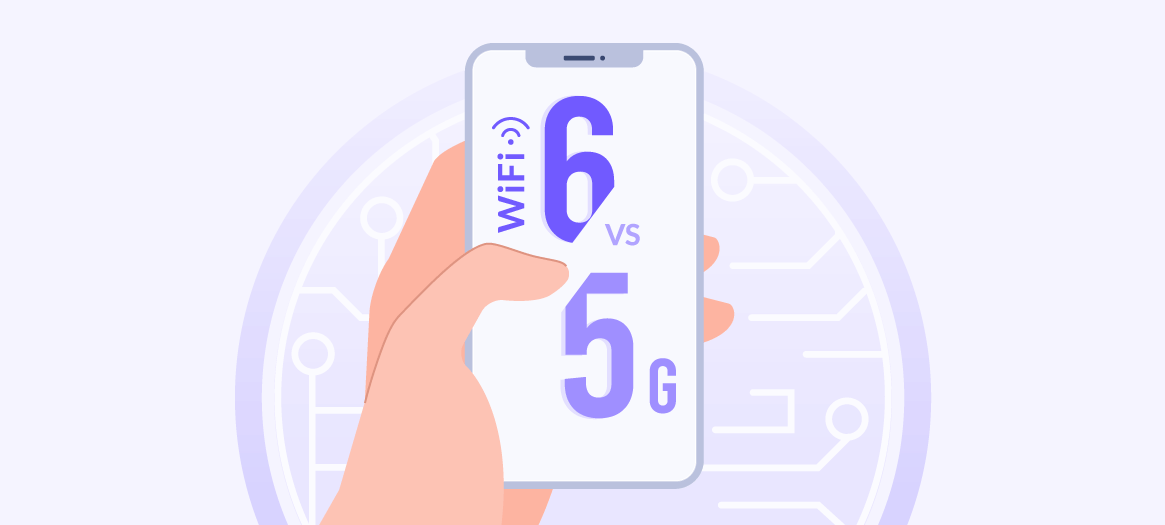
Technology 3:30 Min read
WiFi 6 and 5G, two compatible technologies? Pros and differences.
Although it will probably be years before 5G is significantly deployed worldwide, its arrival raises many questions about its operation, access, impact and applications.
One of the most frequent doubts in the hotel industry is about the usefulness of WiFi, the need to adapt the infrastructures and redirect economic efforts towards state-of-the-art technological investments.
For example, one of the main problems is what will happen when a customer with 5G enters the hotel. Due to the operation of this type of network, it is most likely to run out of 5G coverage since the antennas within private enclosures will not have sufficient range if the hotel system is not prepared.
Besides, keep in mind that each guest will have their own telephone operator and it may be necessary to integrate with each of them so that maintaining coverage is relatively easy.
However, it is too early to raise such assumptions. Providing 5G coverage to all cities is a long-term challenge and requires a lot of investment on the part of operators. In this sense, a hotel that has a quality WiFi network can become a point of union with them.
Preparing a property for the arrival of 5G will require a strong investment and its implementation is only in the embryonic phase, hence the importance of auditing the facilities to pave the way for its possible integration. Other technologies such as WiFi 6 will make more sense and will be more feasible and affordable in the short term.
What is WiFi 6?
WiFi 6 is the next generation standard in WiFi technology. Also known as “AX WiFi” or “802.11ax”, it creates and enhances the current 802.11ac standard. It was originally created in response to the growing number of devices in the world.
It is not a new way to connect to the internet but an update of what was already in place. Unlike the current protocol, WiFi 5 (802.11ac), which operates in the 5 GHz band, WiFi 6 can operate simultaneously in both the 2.4 GHz and 5 GHz band and since April 2020 in the 6 GHz band.
This technology is already a reality and is a clear improvement of the current WiFi service offered and at the investment level it is much less expensive than that of5G since it will be possible to take advantage of much of the existing infrastructure.
While 5G arrives, it is the solution to the multiple connection problems that many hotels encounter, especially when there are many guests.
WiFi 6 versus WiFi 5: pros
As for the advantages of WiFi 6 over previous versions, there are mainly three: higher speed, better operation when there are many devices connected to the same network and better energy efficiency.
- Faster connections offering speeds at least four times higher than WiFi 5
- Increased ability to deal with the growing number of internet-connected devices in the average home
- Better performance in crowded environments
- Lower energy consumption
- Compatible with current systems and much more economical
What is the difference between 5G and WiFi 6?
The main difference lies in the connection of devices. While WiFi 6 is designed to support many connected devices at the same time, 5G serves to connect a single device, even if the connection can be shared.
Moreover, 5G architecture requires many more access points and suffers from poor indoor connectivity. In this type of situation, users who have WiFi 6 will have better experiences in homes and businesses, in short, indoor enclosures.
Are 5G and WiFi 6 going to coexist?
There are many reasons to believe that both technologies will coexist and complement each other.
In order to have an acceptable coverage indoors, it will be necessary to install many more 5G nodes than those installed at the time with 4G. Therefore, this scenario will force us to continue counting on the WiFi network to maintain the capacity and quality of the connection.
It is estimated that 71 % of 5G traffic will go over WiFi 6.
On the other hand, there are currently very few users who use 5G and, as we have said before, its implementation is in the very early stages. Hence the importance of auditing the systems to pave the way for their possible integration. Other technologies such as WiFi 6 will make more sense and will be more feasible and affordable in the short term.
What does it mean for hotels?
In the case of hotels, WiFi 6 improves the wireless part, is easier and less expensive to implement than 5G and, above all, means an improvement in performance in crowded environments that is where we usually find greater difficulties when offering the service.
Therefore, WiFi 6 technology will achieve lower latency when many devices access the router simultaneously.
Recommendations
As mentioned, the safest thing is that both technologies, 5G and WiFi 6, coexist, have their specific areas of application, evolve over time to offer greater benefits in the most efficient way and meet the needs of users.
Keep in mind that to deploy a WiFi 6 network, an exhaustive audit is previously necessary to see what adjustments are necessary or what elements the network needs. Therefore, choosing a trusted technology partner who is a specialist in the design and installation of WiFi projects is crucial for the project to be a success.
At Hotelinking, our R&D department is already working on 5G technology implementation plans for hotels. If you want to learn more do not hesitate to contact us.